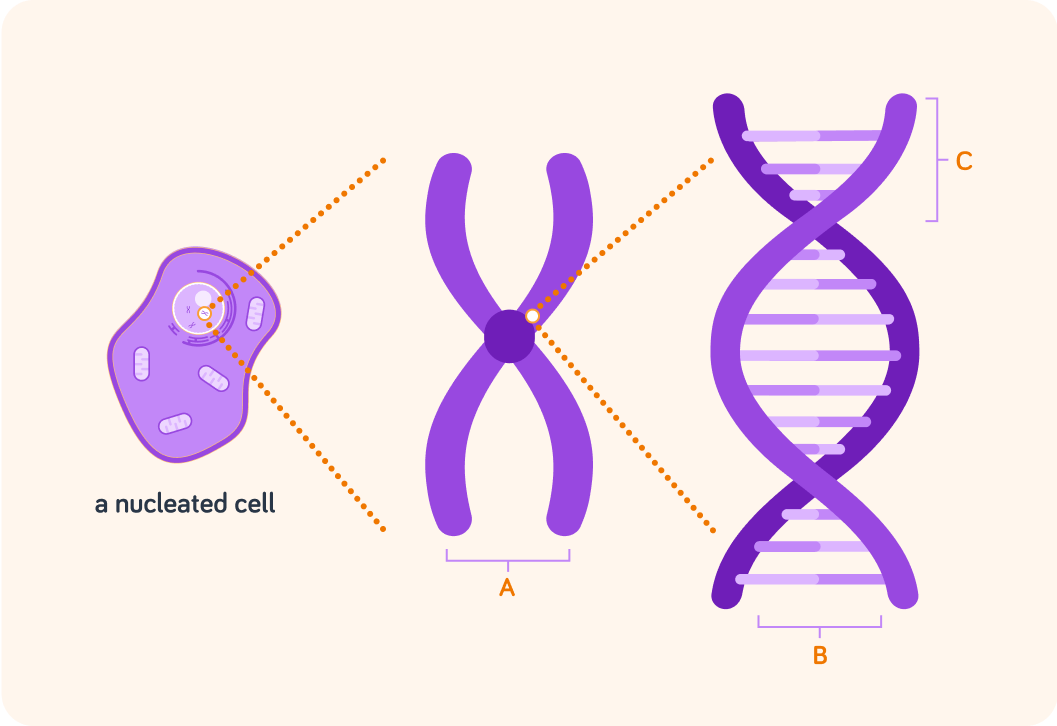YOU ARE LEARNING:
What Is the Role of DNA?

What Is the Role of DNA?
DNA exists as a manuscript of instructions for how to produce proteins, which can be passed onto the next generation.
We know that DNA is important as it is passed onto offspring. Is that all ** DNA is useful for?

DNA is a set of instructions for how to produce proteins. DNA is read by molecules in our body that carry out this function.
DNA is used for several functions to occur in the body through a process called...

Protein synthesis occurs through two processes: Transcription and translation. **** We will look into these in later lessons.
In the body, protein comes in...
A) one form.
B) many forms.
Answer A or B.

Take a guess at what you think proteins do in the body. Pick all the options you think are correct.

You can select multiple answers
Complete this sentence: DNA works as a manuscript of instructions to produce _______

Do you think you have any of the same protein-making information as your grandparents?

A section of DNA coding for a particular protein is called a...
A) codon. B) chromosome. C) gene.

Take a look at this image which zooms closer and closer in on a cell. A section of DNA that codes for a particular protein is called a gene. **** Which do you think is a gene? A, B or C?


Which do you think is double helix DNA?


Which do you think is a chromosome?


What do you think a gene does?

Do you think all sections of DNA are functioning genes?

So there are different types of sections in the DNA double helix. Imagine a helical ladder, with each space between the steps being a different section of DNA.
Genes are instructions for how to create certain proteins, but there are also non-coding regions of DNA. These have different functions, like controlling when genes are expressed. They essentially have the role of turning genes on and off.
Our ability to read and understand DNA has made studying DNA useful. Pick all the options you think apply. By reading our genome we can currently ...

You can select multiple answers
As we have seen, DNA contains instructions for making proteins, through small sections of DNA called genes. Around 50% of a parent's genes will be passed onto their offspring, so this enables a record of protein-making information to be preserved over successive generations.
